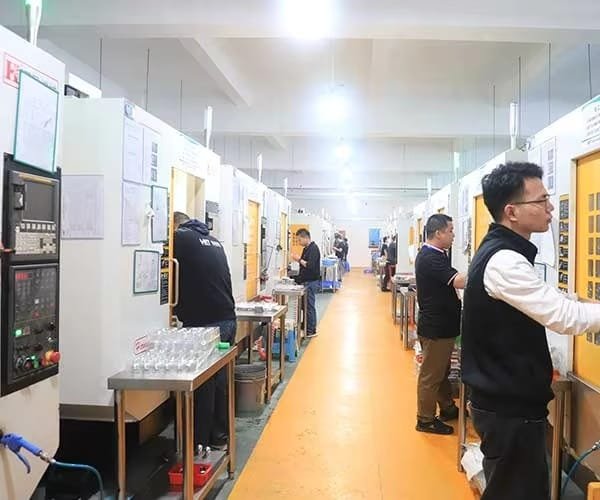Centerless grinding is a very useful and exact machining method used in many industries for forming cylindrical pieces. Unlike conventional grinding methods calling for workpieces to be held in place with fixtures or chucks, the centerless grinding process uses two wheels and a work rest blade to get accurate results. This method is widely used in manufacturing industries due to its speed, accuracy, and capacity to control big volumes of production.
What is Centerless Grinding?

Centerless grinding in metalworking is a method wherein material is removed from the external surface of a cylindrical workpiece without a spindle or chuck. Rather, the workpiece is set between a grinding wheel and a regulating wheel and supported by a work rest blade centerless grinding capabilities. The grinding wheel acts in cutting; the regulating wheel controls the rotation of the workpiece.
Types of Centerless Grinding
There exist three main forms of centerless grinding techniques:
1. Through-Feed Grinding
In through-feed grinding, the workpiece is continuously moved between the wheels throughout the process. For this method, parts with uniform diameters—like dowels, tubes, and rods—are perfect.
2. In-Feed Grinding
In order to do in-feed grinding, the workpiece is positioned in a fixed location between the rows of wheels. The grinding wheel feeds into the workpiece to chop off material centerless grinder. For this approach, parts with different diameters or intricate forms would be ideal.
3. End-Feed Grinding
The end-feed grinding process is similar to the in-feed grinding process, but it allows the workpiece to escape after it has been ground short time. This method is often used for tapered parts or those requiring perfect geometry.
Key Components of the Centerless Grinding Process
Three simple elements characterize the centerless grinding configuration:
- Through the use of cutting action, the grinding wheel is able to remove material from the workpiece.
- Controlling the rotational speed and feeding the workpiece through the machine are both accomplished with the help of the regulating wheel.
- The work rest blade guarantees accurate alignment during the grinding operation and supports the workpiece.
Advantages of Centerless Grinding
Industrial manufacturing prefers centerless grinding as it offers various benefits:
- Because there is no need for a fixture or chuck, the process of loading and unloading parts is completed more quickly, resulting in high efficiency.
- Low mistakes and tight tolerances produced by increased accuracy help to explain why
- Fast cycle times, which save costs, make perfect for mass production.
- Enhanced Surface Finish: Reaching perfect finishes free from supplementary finishing methods
- Capable of managing a wide variety of materials, including a variety of composites, ceramics, and metals.
Common Applications of Centerless Grinding
The manufacturing of shafts, rods, and components for fuel injectors are all examples of automobile manufacturing.
- Aerospace: Including turbine shafts and landing gear components, precision component fabrication is under focus.
- Medical devices for surgical tool shaping and implant components.
- For precise pins, connections, and contacts, electronics.
Challenges in Centerless Grinding
Although it has several benefits, centerless grinding has certain challenges as well.
- A proper setup demands for seasoned operators.
- Under strain, thin or lengthy parts could bend or distort.
- Regular maintenance is required for grinding and regulating wheels in order to ensure that they continue to function properly.
Best Practices for Successful Centerless Grinding
In order to achieve the best possible results from centerless grinding, consider the following ideas:
- Verify that the wheel alignment and the blade alignment of the work rest are as they should be.
- Use appropriate grinding and regulating wheels for the intended finish as well as for the material.
- Keeping enough coolant flow improves surface smoothness and helps to minimize overheating.
- Regularly inspect wheels, alignment, and machine calibration.
Conclusion
Centerless grinding is a needed machining process with unmatched efficiency, speed, and accuracy. Since it can control many materials and generate outstanding finishes, it has become vitally necessary in industries seeking precision components. Learning best practices provides regular and predictable results, even if it presents some setup difficulties.

